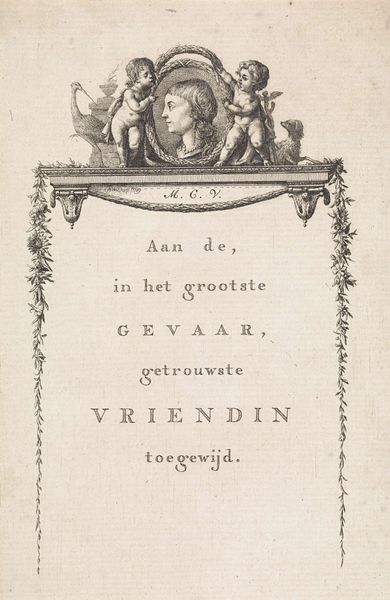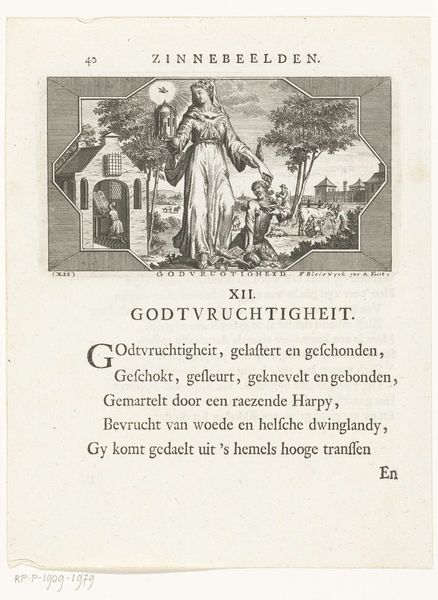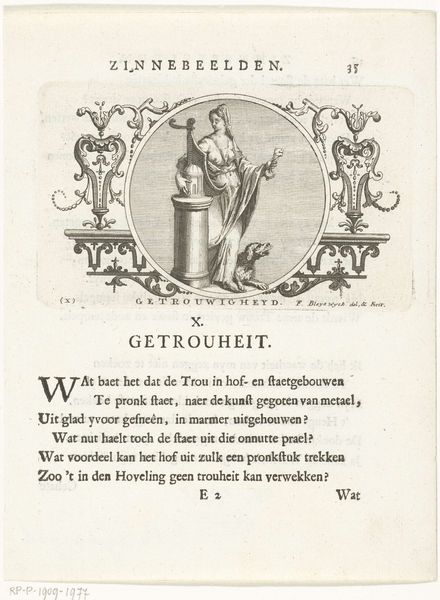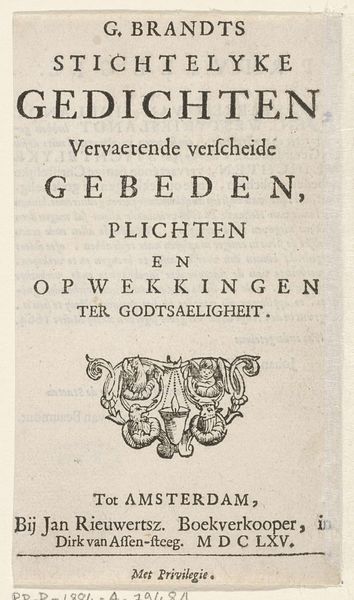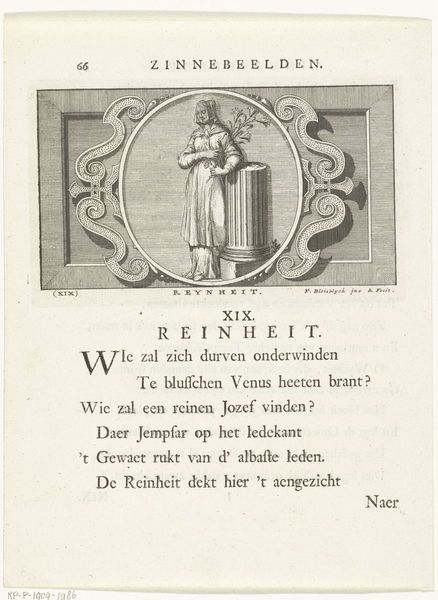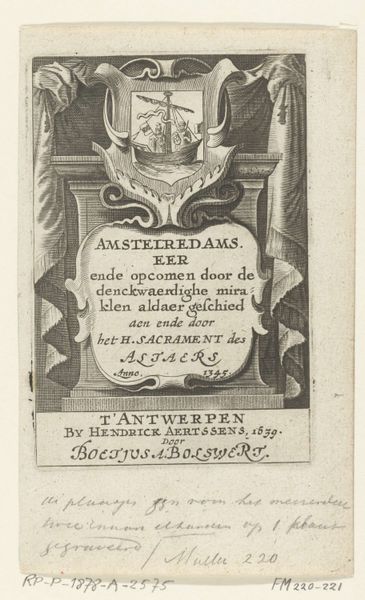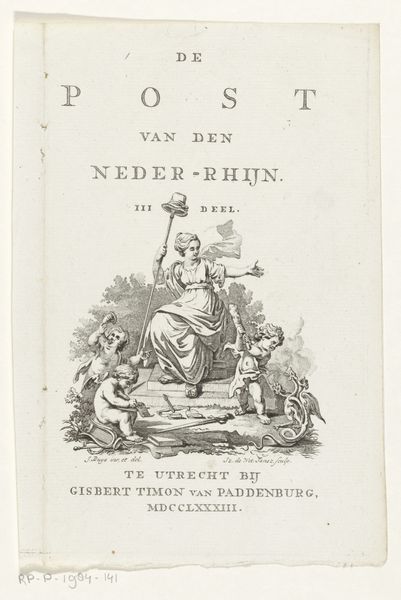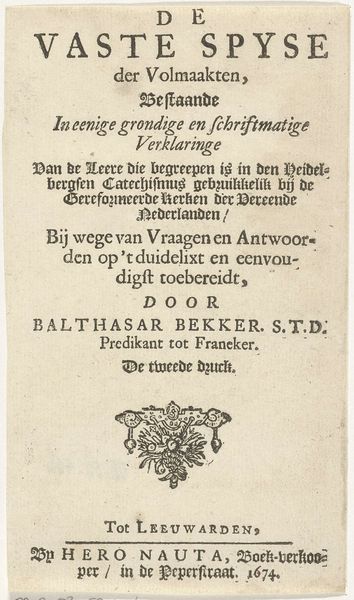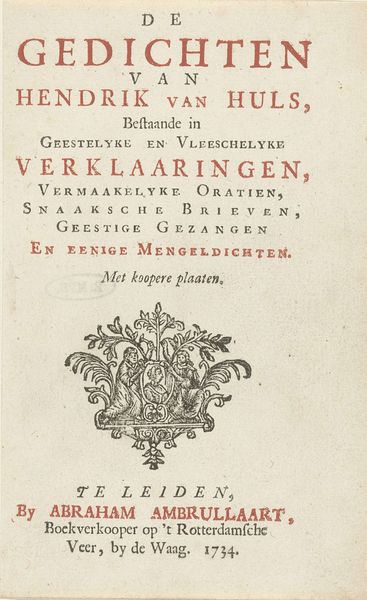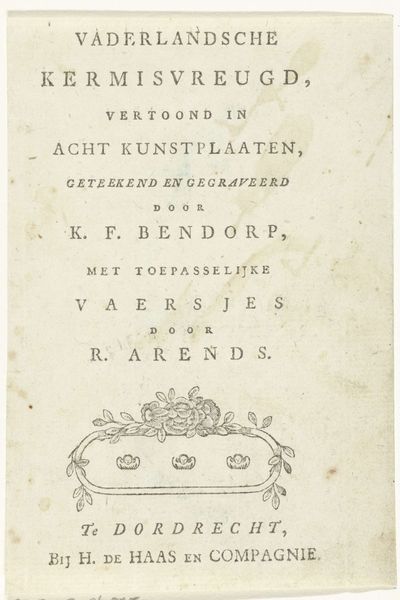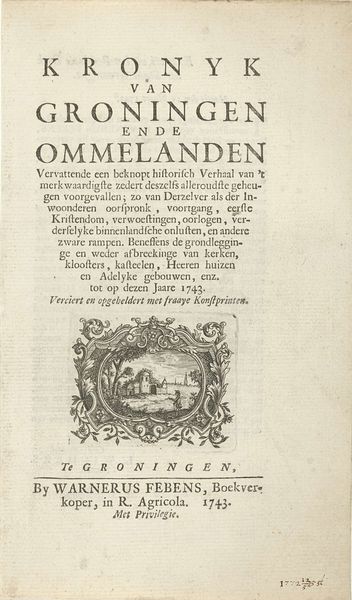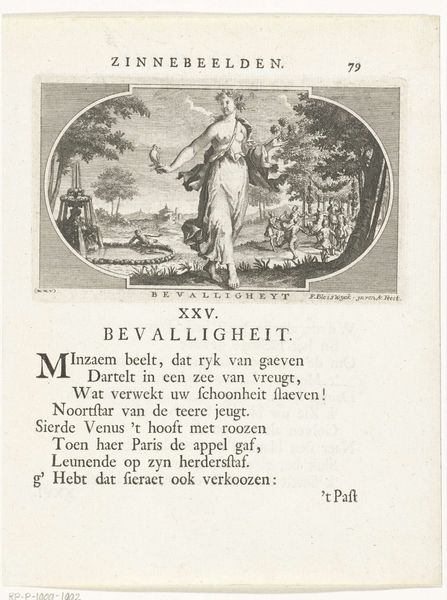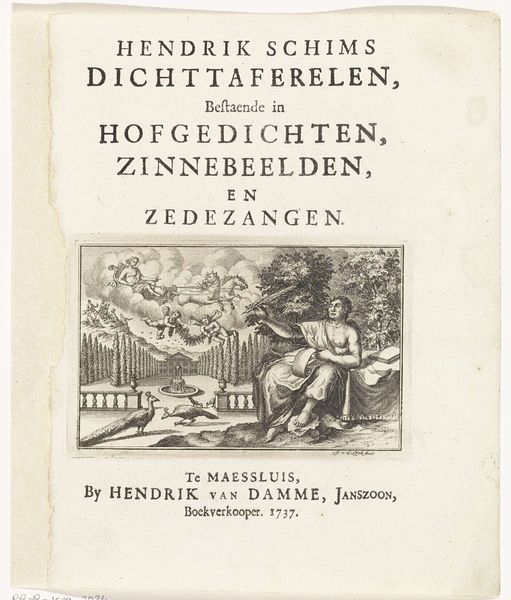
print, engraving
#
allegory
#
baroque
# print
#
figuration
#
history-painting
#
engraving
Dimensions: height 196 mm, width 150 mm, height 78 mm, width 130 mm
Copyright: Rijks Museum: Open Domain
Editor: This is an engraving from somewhere between 1681 and 1737, attributed to François van Bleyswijck, called "Emblem with Allegory of Servitude". The figure is so serene, almost dreamlike. How would you interpret its meaning within the context of the time? Curator: It's interesting you mention the dreamlike quality. Allegories like this served a vital role in communicating moral and political ideas during the Baroque era. It wasn't just about artistry; prints like these actively shaped public perception and reinforced societal norms. The "Servitude," which we might see negatively today, was then viewed through a different lens. Editor: How so? Was servitude considered a virtue then? Curator: Within a social structure deeply rooted in patronage and obligation, "servitude" was a way to describe loyal service and civic duty, concepts deemed essential for societal harmony. Think about the Dutch Republic's emphasis on order and the roles everyone played. This print promotes a social contract, suggesting that diligence ensures collective prosperity. Editor: So, the figure isn’t necessarily a slave, but representing someone dutiful? How would the museum context have further shaped interpretation of prints such as this at the time? Curator: The museum at the time would most likely be the private collection of a noble or a scholarly society, serving to reinforce their power and cultural capital. Collecting and displaying these images became a way of defining "good" civic behavior, emphasizing this interpretation. Therefore, the power of such art lies not only in its beauty but also in how it molded ethical considerations in society. Editor: That’s a side of Baroque art I had not considered. It is a window into the period's moral compass. Curator: Indeed, viewing art in its social framework illuminates the intended, often didactic, purpose behind seemingly simple imagery.
Comments
No comments
Be the first to comment and join the conversation on the ultimate creative platform.
